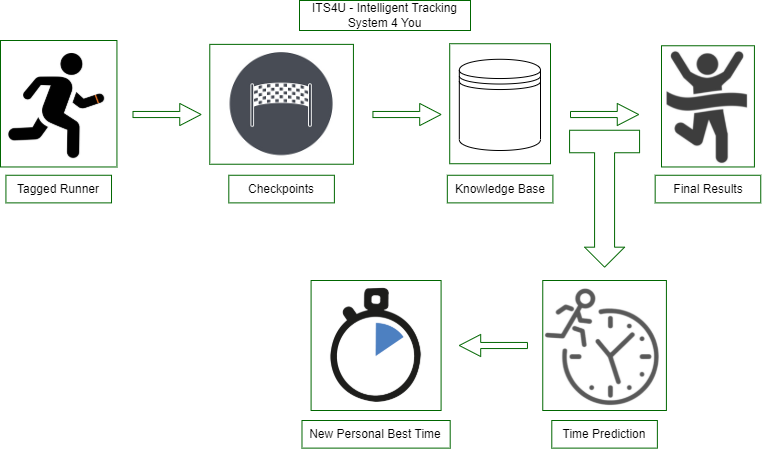This research applied artificial intelligence (AI) to facilitating the process of organising and handling a marathon in such a way that the athletes running the course could be easily detected and tracked.
From the data gathered, the timing of every 5km interval covered by the marathon runners was noted and stored in a case base. This data was then used for predicting a new personal-best timing for the athletes, or even recreational runners interested in running the marathon. Checkpoints were installed along the marathon track with a radio-frequency identification (RFID) system that could monitor the runners’ interval timings and pace.
The architecture of the proposed system (Figure 1), is made up of: a unique RFID tag, to be worn by the athlete; an RFID reader; an RFID antenna connected to the reader through the use of an interface cable; and a computer system connected to the reader. The RFID system would monitor the runners’ timing at every interval checkpoint, collecting data that could be processed to infer smart information.
The system makes use of the Universal Reader Assistant by ThingMagic. This allows the concurrent monitoring and detection of the RFID tags throughout the marathon by displaying the name of the runner, together with the timestamp of when the runner would have passed the checkpoint, as well as the read count. Moreover, the software displays the unique tag count that would display the number of runners who would have passed through this checkpoint during the whole marathon.
The RFID timing system (Figure 2) was tested to calculate the effectiveness and range of the antenna, and obtained satisfactory results. Furthermore, the data gathered from the system was utilised to determine and predict a new timing for each marathon runner that previously was not possible.


Student: Matthew Bonanno
Course: B.Sc. IT (Hons.) Artificial Intelligence
Supervisor: Prof. Matthew Montebello
